ARY News – Pakistan’s largest and the most sought-after media channel – brings to you an amazing option to watch LIVE...whatever is happening in the world right now. You just need a right device and an access to Internet for visiting live.arynews.tv on the go from anywhere. So, keep going LIVE with ARY News.

A remarkable and emotional incident captured by a shop’s CCTV camera has gone viral, showing how an armed robbery was unexpectedly stopped by the innocent act of a young child.The precise location of the incident in Pakistan has not yet been confirmed.The video shows a shopkeeper seated behind his counter with his daughter, believed to be around four or five years old, when an armed man enters, points a gun, and demands cash along with the shopkeeper’s mobile phone.In an unexpected turn, the little girl, unaware of the danger, extends her lollipop toward the assailant.The gesture appears to immediately change the robber’s demeanor.[video mp4="https://arynews-1313565080.cos.ap-singapore.myqcloud.com/zip-archives/wp-content/uploads/2025/11/A-extraordinary-and-touching-incident-captured-on-a-shops-CCTV-camera-has-become-a-viral-sensat.mp4"][/video]The footage shows him returning the money and phone, offering a brief moment of affection or acknowledgement toward the child, and then leaving the shop without harming anyone or taking anything.The clip has been widely shared online, with many describing the moment as a powerful reminder of how a child’s innocence can sometimes pierce through even the darkest intentions. Karachi citizen foils robbery attempt with courage A fearless citizen foiled a Karachi robbery attempt successfully, demonstrating exceptional courage in the face of danger, in Azizabad, Gulshan e Shamim area of Karachi.The CCTV footage of the incident has gone viral, emphasising the rising street crimes in the biggest city of Pakistan.According to reports and obtained CCTV footage, three armed goons arrived on motorcycles and tried to rob al fresco diners at a local hotel.However, a Karachi citizen foiled robbery attempts by aiming his weapon and shooting at the suspects.
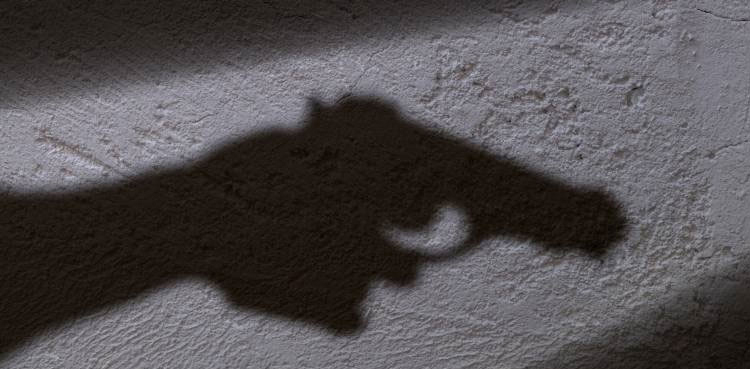
KARACHI: A stray bullet claimed the life of a three-year-old child in the Orangi Town area of Karachi on Sunday night, ARY News reported.According to the police, the child was riding on a motorcycle with his uncle when a bullet from an unknown direction struck him.The child died on the spot. He was the third of four siblings (brothers and sisters).The police further informed that the child was going to his home in Nazimabad with his maternal uncle.Body Found in GolimarOn the other hand, a body has been found near a pond in the Golimar neighbourhood of Karachi, rescue sources said.They further informed that the person has not been identified yet, as his hands and legs were tied with a rope.Couple Injured in Baldia Town FiringIn another incident, a couple sustained injuries as unidentified assailants opened fire at their house situated in Musharraf Colony of Baldia Town.The police informed that the injured were identified as Yusra and Husnain, and personal enmity is believed to be the motive behind the crime.They were shifted to the Civil Hospital Karachi.Further investigation is underway, the police said.Earlier, Additional Inspector General (AIG) Karachi, Javed Alam Odho, announced in a press conference that serious crimes in the city fell by 32 percent during the first eight months of 2025.He said murder cases dropped by 30 percent, street crimes by 16 percent, robberies by 20 percent, and vehicle thefts by 9 percent.The AIG highlighted that police operations across Karachi resulted in the arrest of 2,452 suspects and the safe recovery of 62 abducted persons.During encounters, police arrested 611 criminals, while 94 were killed and 626 were injured.He further revealed that the Anti-Vehicle Lifting Cell (AVLC) carried out major crackdowns, arresting 62 inter-district gangs involved in car lifting and recovering 23 stolen vehicles.Odho stated that the decline in crime figures was the outcome of enhanced policing, timely intelligence, and sustained operations against organised gangs.The AIG added that Karachi Police remain committed to further reducing street crimes and protecting citizens through stricter enforcement measures in the coming months.

LAHORE: A police department employee has been booked for his alleged involvement in an armed robbery, after CCTV footage clearly captured the incident, officials confirmed on Sunday.According to Patoki police, the suspect, identified as Asim Yaqub, works as a sanitary worker at the DIG Office Lahore. He, along with an accomplice, carried out a robbery at a petrol pump in Kasur’s Saddar Patoki area.Police said the CCTV footage of the robbery shows the suspects arriving at the petrol pump, brandishing weapons, and snatching Rs 55,000 from the staff. The suspects also got their vehicle refueled during the hold-up. The CCTV visuals further reveal the suspects trying to flee the scene in haste.While escaping, the suspects’ car collided with another vehicle — an accident also captured in CCTV recordings, according to police. This crash allowed staff and locals to intervene.https://www.youtube.com/watch?v=qg8CzSBpt7AFollowing the accident, the petrol pump administration detained the police employee, who was later handed over to law enforcement. The accomplice managed to escape.Police said several different vehicle number plates were also recovered from the suspects’ car. Investigators added that CCTV evidence is being used as the primary lead in the case.A robbery case has been registered against both suspects at Saddar Patoki Police Station.Earlier, CCTV footage of a police encounter with armed robbers on Karachi’s Shaheed-e-Millat Road had surfaced, showing dramatic moments as police officers attempted to stop three men on a motorcycle..According to Karachi police, the suspects opened fire instead of stopping, prompting law enforcement officials to return fire. The CCTV footage captured the exchange of gunfire that left one suspect dead and two others injured before being arrested.Police said weapons, cash, and a motorcycle were recovered from the suspects following the Karachi encounter. The deceased robber has been identified as Umar, while the injured suspects were named Irfan Ali and Rashid Ali, according to Karachi police officials.Authorities added that the CCTV footage will be used as evidence to aid further investigation into the gang’s criminal activities in Karachi.https://www.youtube.com/watch?v=JTDPQzO5KOo

LONDON: Punjab Chief Minister Maryam Nawaz said that neither she nor her father, former Prime Minister Nawaz Sharif, ever sought revenge against anyone, ARY News reported. Punjab Chief Minister, en route to Pakistan from London, said she emphasized that those who sought revenge ultimately faced the consequences of their own actions, highlighting that justice prevails over personal vendettas. https://www.youtube.com/watch?v=fxgRbF-iV7sSpeaking to the media in London, Punjab Chief Minister Maryam Nawaz said representing her country is a matter of great honor for her. She also expressed profound respect for the late Benazir Bhutto, saying she holds unparalleled admiration for the former prime minister in her heart.Maryam Nawaz reiterated that her identity is deeply tied to Pakistan, highlighting her commitment to serving the nation. Her statements come ahead of her return to Pakistan, where she continues to play a prominent role in Punjab’s political landscape. Maryam Nawaz Highlights Climate Action at COP-30 On November 11, Punjab Chief Minister Maryam Nawaz Sharif, speaking at the inauguration of the Pakistan Pavilion at COP-30 in Belem, Brazil, said tackling climate change is no longer just a slogan but a mission.She highlighted Punjab’s expanded budget for smog control, eco-friendly fuel initiatives, and waste-to-energy projects, noting that forests, lakes, and wildlife are showing signs of recovery.Maryam Nawaz emphasized clean water and sanitation programs, e-mobility initiatives with 1,500 electric buses and 120,000 e-bikes, and AI-driven monitoring of air quality and crop residue burning. She also noted the province’s climate-smart farming program and the construction of South Asia’s largest wildlife hospital.Reflecting on the 2025 floods, she praised Punjab’s coordinated disaster response and stressed sustainable rebuilding. Maryam Nawaz urged global cooperation, calling for unity from the Amazon to Punjab, and highlighted the shared responsibility of humanity to protect the environment for future generations.
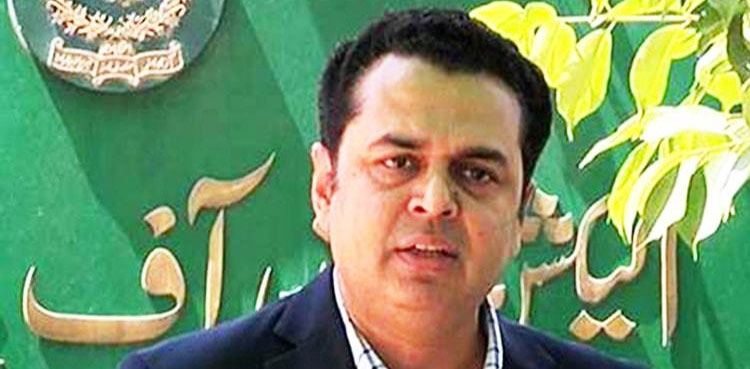
FAISALABAD: The Election Commission of Pakistan (ECP) has issued a notice to Minister of State for Interior Talal Chaudhry for allegedly violating the election code of conduct during his visit to constituency PP-116. The development comes ahead of the by-election scheduled for November 23, ARY News reported.The action was taken following a complaint filed by the District Election Commissioner, with District Monitoring Officer Murtaza Malik overseeing the proceedings. The monitoring officer has directed Talal Chaudhry to submit a written explanation within two days regarding the alleged violations.During his visit to PP-116, Minister Talal Chaudhry addressed the media, an act that reportedly prompted the notice from election authorities. A detailed report on the matter will also be forwarded to the Election Commission in Islamabad for further review.The by-election in PP-116 was necessitated following the vacancy created due to the disqualification of PTI MPA Ismail Sehlaki.The Election Commission has emphasized strict adherence to the code of conduct and warned all candidates and political representatives to avoid any actions that could compromise the fairness of the upcoming poll.Earlier, Minister of State for Interior Talal Chaudhry lashed out at Khyber Pakhtunkhwa Chief Minister Sohail Afridi, accusing him of incompetence and deliberate political theatrics aimed at pleasing his party’s founder.Addressing a press conference, Talal Chaudhry claimed that Sohail Afridi was “intentionally appointed as a weak chief minister to stage dramas and blackmail the state”. He said changing the chief minister would not stop Pakistan’s counterterrorism campaign, stressing that “this war will continue under the National Action Plan — what needs to change is the mindset, not the leadership.”Talal Chaudhry revealed that the federal government had provided modern bulletproof vehicles to the Khyber Pakhtunkhwa Police, but the provincial government refused to accept them, calling them “old.” He said each bulletproof vehicle is worth around Rs 100 million and is equipped with international-standard security features.“The same vehicles are used by federal ministers, security officials, and even the interior minister himself,” Chaudhry noted, adding that “many officers across Pakistan still use even older vehicles.”

JAMSHORO: A viral video showing police officers allegedly taking bribes from motorists on the M-9 Super Highway has sparked widespread attention. Citizens recorded the footage near Jamshoro, and it quickly went viral on social media.The viral video shows a police officer and other personnel sitting in a police mobile, reportedly accepting thousands of rupees from a motorcyclist traveling from Karachi to Hyderabad. The footage appears to clearly capture the transaction, prompting outrage among viewers.https://www.youtube.com/watch?v=putmo8abxe0Following the circulation of the viral video, police authorities took immediate notice. SSP Jamshoro, Zafar Siddique, confirmed that the officer in charge of the police mobile has been suspended and ordered a formal inquiry.The ASI of Bola Khan Police Station has been suspended, and the DSP of Kotri has been directed to conduct a thorough investigation into the incident. According to initial reports, the bribe collected from the motorcyclists amounted to 30,000 rupees.SSP Jamshoro stated that the viral video has been treated seriously and that strict action would be taken against anyone found guilty of misconduct. The police department has assured citizens that measures are being put in place to prevent such incidents in the future.The viral video has already triggered debates online about police accountability, and officials say they are monitoring the situation closely to ensure transparency and justice.Earlier, CCTV footage of the murder of a youth surfaced, showing the victim being targeted by men on a moving bike on Abul Hassan Isphahani Road.The youth was shot while he was driving his motorcycle in Gulshan-e-Iqbal 4. Just after the shooting, the youth fell to the ground, and immediately, two armed men arrived within a minute. They then sprayed bullets at the youth again.After a few minutes, another armed man arrived, carrying a weapon in both of his hands. This armed man later stopped a food delivery rider coming from behind, sat on the rider’s bike, and fled.The Police said that it seems the youth was murdered due to a personal enmity, though the matter is still suspicious.https://www.youtube.com/watch?v=zVYSOmMBli8

KARACHI: Federal Minister for Railways, Hanif Abbassi, has said that Karachi is not only the hub of the country but also the hub for Pakistan Railways, ARY News reported.The Minister visited Karachi's Cantt station on Sunday to review the modern facilities made available there.Hanif Abbassi said that it was their constant demand to start work on modernizing Karachi's railway station.The Minister said that they have now transformed the Karachi railway station, which is much bigger than the Lahore railway station.He said that besides a CIP lounge, economy and family areas have also been set up at the station. He also announced that they have prepared a world-class train and that free Wi-Fi facility will also be available.Hanif Abbassi further informed that work on railway tracks is underway with the cooperation of the Asian Development Bank (ADB).He noted that the construction of the railway tracks will take five to six years.He said that the Railways Ministry has done a lot of work in just eight to nine months.The Minister's visit comes a day before the Prime Minister formally inaugurates a new Shalimar Train and other facilities at Karachi Cantt railway station tomorrow.Pakistan Railways has built CIP lounges, automatic escalators, and other modern facilities at the Cantt railway station.Earlier, Pakistan Railways has released new photographs showcasing the upgraded Karachi Cantt Railway Station following its recent renovation.Prime Minister Shehbaz Sharif, accompanied by Federal Minister for Railways Hanif Abbasi, is scheduled to inaugurate the revamped station tomorrow (Monday).The newly upgraded first-class lounge at Karachi Cantt Railway Station offers a warm, inviting, and elegantly modern ambience with subtle touches of regional culture.The lounge features soft, warm lighting from ceiling spotlights along with a prominent central chandelier, creating a cozy yet sophisticated atmosphere. Large arched windows let in natural light, further enhancing the spaciousness of the interior.Beige colour Sofas with wooden armrests are arranged in small clusters to provide comfortable and private seating for travelers. A striking highlight of the design is the series of pillars adorned with traditional Sindhi Ajrak–patterned tiles, adding a strong cultural and artistic identity to the space.Track lighting on the ceiling ensures even illumination, while wall-mounted pendant lamps bring additional warmth to individual seating areas. A centrally placed television screen near the windows offers entertainment or passenger information.Green plants add a refreshing natural touch, and small framed artworks on the walls contribute to the refined and tasteful ambience.Overall, the upgraded first-class lounge blends modern comfort with cultural aesthetics, offering passengers a serene, pleasant, and airport-like experience — beautifully designed and well-equipped for traveler convenience.
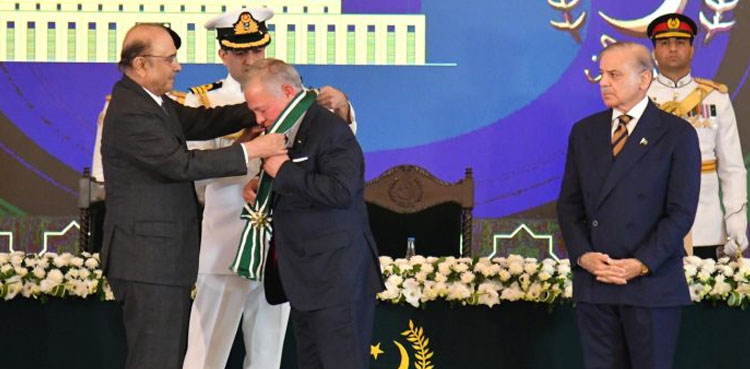
ISLAMABAD: President Asif Ali Zardari received His Majesty King Abdullah II ibn Al-Hussein, King of the Hashemite Kingdom of Jordan, at Aiwan-e-Sadr during the monarch’s state visit to Pakistan, ARY News reported.King Abdullah II was accompanied by Prince Ghazi bin Muhammad, Chief Advisor for Religious and Cultural Affairs and Personal Envoy; Ayman Safadi, Jordan’s Deputy Prime Minister and Foreign Minister; and Major General Yousef Huneiti, Chairman of the Joint Chiefs of Staff.First Lady Aseefa Bhutto Zardari, PPP Chairman Bilawal Bhutto Zardari and Senator Sherry Rehman were also present.During their meeting, President Zardari and King Abdullah II reaffirmed the historic, brotherly ties between Pakistan and Jordan. The two leaders reviewed the full spectrum of bilateral relations and emphasized boosting cooperation, including enhanced people-to-people exchanges.They also discussed regional and global developments, with a particular focus on the situation in the Middle East. Both sides stressed the importance of humanitarian cooperation and coordinated positions in multilateral forums.On Palestine, President Zardari and King Abdullah II reiterated their shared principled stance on post-war Gaza. They firmly rejected any displacement of Palestinians and again underscored the urgency of a Two-State solution based on pre-June 1967 borders, with Al-Quds Al-Sharif as the capital of an independent and sovereign Palestinian state.King Abdullah II expressed pride in Jordan’s longstanding relationship with Pakistan and reaffirmed his desire to further expand cooperation across multiple sectors. Both leaders voiced confidence in the future direction of bilateral ties and agreed to maintain close coordination on regional and global matters.Deputy Prime Minister and Foreign Minister Senator Ishaq Dar, Federal Minister for Climate Change Senator Musadik Malik, senior officers of the Foreign Office, and the ambassadors of both countries also attended the meeting.A special investiture ceremony followed, during which President Asif Ali Zardari conferred the Nishan-e-Pakistan on King Abdullah II. In return, the King bestowed upon President Zardari the Wisam al-Nahdah al-Mursa‘ (Bejewelled Grand Cordon of Al Nahdah), an honour awarded by the Jordanian monarch to heads of state and distinguished dignitaries.The ceremony was attended by Prime Minister Shehbaz Sharif, Senate Chairman Syed Yousuf Raza Gilani, Field Marshal Syed Asim Munir, the Air and Naval Chiefs, federal ministers and members of the diplomatic corps.A state banquet was later hosted in honour of the visiting monarch at Aiwan-e-Sadr.
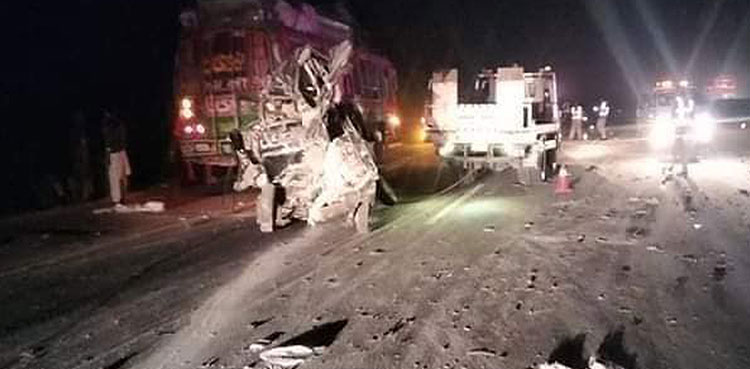
MANGA MANDI: In a tragic incident, a passenger bus carrying wedding guests collided with a tractor trolley near Kangra Karyal in the Manga Mandi area of Punjab.The accident resulted in the death of three persons and wounded 20 others, with fears of a rising death toll, ARY News reported.According to Rescue 1122 officials, three people lost their lives on the spot while 20 persons sustained injuries and were shifted to a nearby hospital.The rescue officials further said that the bus had arrived at the Pajiyan area from Gujjar Colony and the accident occurred while returning.They added that the condition of some injured persons is critical and the death toll could rise.Earlier on Saturday, four people, including three real brothers, died in a road accident when a passenger bus collided with the motorcycles on which the deceased were travelling in Shujabad area of Punjab.Rescue 1122 informed that the passenger bus crashed into both motorcycles, killing four people instantly, including the three brothers.Rescue officials apprised of the unfortunate details that among the deceased was 20-year-old Yasir, whose wedding was scheduled for tomorrow.The youth was travelling to his home with cousins and friends after shopping for his Mehndi ceremony.https://youtu.be/74T95S2CpUU?si=zAbC__jzySSLgm25Earlier today, plying dumpers and water tankers have been completely banned in Karachi, Traffic police chief said in a statement on Saturday.DIG Pir Muhammad Shah has said that the blanket ban has been imposed on dumpers and water tanker in the city after the Razzaqabad traffic mishap.“The tracker was not found to be installed in the dumper responsible for the accident in Karachi locality”. The accident claimed life of a rickshaw driver, while several others were injured in the incident.DIG Pir Muhammad Shah said that a van and a shop were also damaged in the mishap.“Only those vehicles will be exempted, which have given access of their control to the traffic police,” DIG Traffic said. “Trackers have been installed in several dumpers and water tankers, but they didn’t give access to police,” he said.“The exempted heavy vehicles would also be allowed only during the scheduled time,” DIG said.The owners of dumpers and water tankers with installed trackers would have to contact traffic police and to formally give access of their trackers to us, police officer said. “No dumper or tracker will now run on Karachi roads without giving access of their trackers to police,” DIG said.“The police will seize the vehicles without trackers during inspection on city roads,” he added.
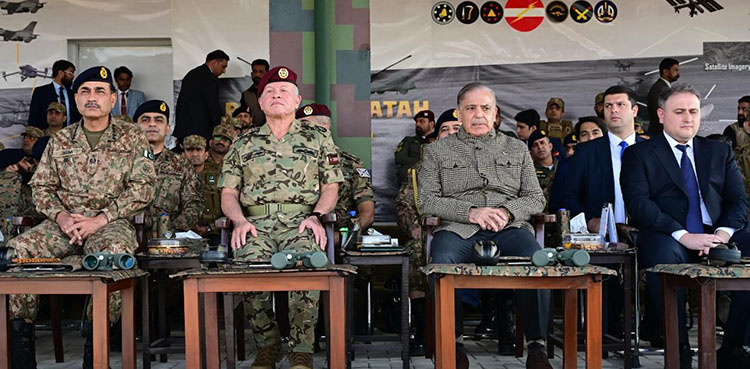
Jordan’s King Abdullah II visited the headquarters of Global Industries and Defence Solutions (GIDS), accompanied by Princess Salma bint Abdullah and other senior Jordanian officials, the Inter-Services Public Relations (ISPR) said. According to the military media wing, His Majesty King Abdullah II ibn Al Hussein, King of the Hashemite Kingdom of Jordan and the Supreme Commander of the Jordan Armed Forces visited Global Industrial & Defence Solutions (GIDS) accompanied by Her Royal Highness Princess Salma bint Abdullah II ibn Al Hussein and delegation of Jordanian civil and military officials. Field Marshal Syed Asim Munir, NI (M), HJ, Chief of Army Staff (COAS) along with other senior officials received the royal guests at the venue.During the visit, His Majesty was given a comprehensive briefing on the structure, capabilities, and product portfolio of GIDS. The briefing showcased Pakistan’s progress in indigenous defence production, technological innovation, and potential avenues for bilateral defence cooperation between Pakistan and Jordan.Later, His Majesty King Abdullah II visited the Tilla Field Firing Ranges. Prime Minister Muhammad Shehbaz Sharif also graced the occasion. His Excellency Mr Vugar Valeh oglu Mustafayev, Minister of Defence Industry of the Republic of Azerbaijan was also amongst the distinguished guests at the Firing Ranges.His Majesty and distinguished guests witnessed a joint fire and manoeuvre exercise. The exercise demonstrated multi-domain operations, including conventional and air firepower, coordinated manoeuvres, spectrum warfare capabilities supported by multi-purpose drones employed in various configurations and roles.King Abdullah II appreciated the high standards of training, professionalism, and operational capabilities and preparedness demonstrated by the participating troops and aircrews.On the occasion, Prime Minister Muhammad Shehbaz Sharif expressed Pakistan’s deep respect and affection for His Majesty King Abdullah II and the people of Jordan, noting that the visit reflects the enduring friendship, mutual trust and a shared desire for peace and development.During the visit, COAS underscored the strong defence partnership between Pakistan and the Hashmite Kingdom. The Field Marshal reiterated Pakistan’s commitment to further enhancing military-to-military cooperation with Jordan and jointly realising the mutual vision of a stable and peaceful region.Earlier His Majesty conferred upon the COAS the Order of the Military Merit of First Degree, in recognition of his outstanding service and significant contributions to strengthening military cooperation between the Hashemite Kingdom of Jordan and Pakistan.His Majesty King Abdullah II is on a two-day visit to Pakistan which marks a significant milestone in reinforcing the historic bonds of fraternity and brotherhood between Pakistan and the Hashemite Kingdom of Jordan.

KARACHI: Chief Minister Sindh, Murad Ali Shah, on Sunday visited the Karimabad Underpass to review the progress of the construction work on the project, ARY News reported.The Sindh CM directed the Karachi Development Authority (KDA) to speed up work on the underpass, instructing the concerned officers to complete the project within the stipulated time.He stated that any further delay in the project will not be tolerated.In his briefing to the CM, Local Bodies Minister Nasir Hussain Shah informed him that the project's cost is a whopping Rs $3.810$ billion.Murad Ali Shah said that the flow of traffic will be substantially improved with the completion of the project.He added that providing all basic facilities to the citizens is the government's priority.The Sindh government has faced criticism over the project's delay, which has brought business activity in the area to a standstill.Karachi Mayor, Murtaza Wahab, had earlier this year given a deadline to complete the project in September.However, the deadline could not be met, and the project is still under construction.Earlier, Karachi may face a shortage of 100 million gallons of water per day (MGD) after a power breakdown at the Dhabeji pumping station disrupted a key pipeline, the Karachi Water & Sewerage Corporation (KWSC) said in a statement on Sunday.According to KWSC, the breakdown occurred in Phase 2 of the Dhabeji pumping station, resulting in the shutdown of two pumps and damage to Line No. 5 of the water supply system.A KWSC spokesperson said the power failure—caused by K-Electric—could create a shortage of 100 MGD in Karachi. Repair work on the affected pipeline near Thatta is underway on an emergency basis, the spokesperson added.This marks the second power breakdown at Dhabeji within days. On the night of November 13, a similar breakdown caused a shortfall of 40 MGD in the city’s water supply. That outage was attributed to a cable fault, which had shut down two major pumps at the K-3 pump house.Meanwhile, K-Electric (KE) issued a statement clarifying that alternative power sources are currently supplying electricity to the Dhabeji pumping station. However, water seepage from pipelines is creating difficulties for repair crews and damaging underground cables. KE said the issue of water leakage has been formally reported to the relevant authorities.
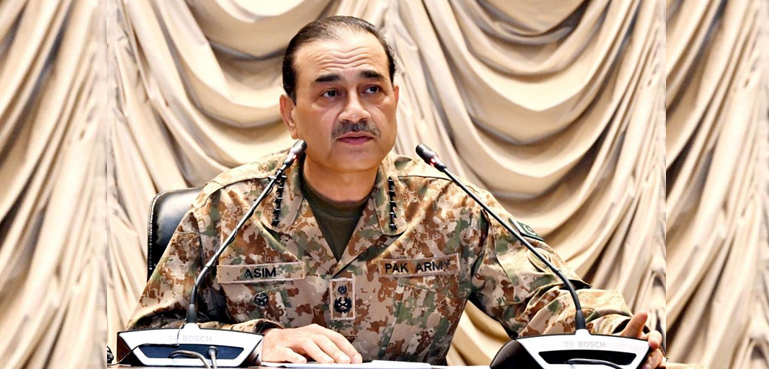
ISLAMABAD: Field Marshal Syed Asim Munir, the Chief of Army Staff (COAS), has vowed a befitting response to any attempt to impose conflict on Pakistan, ARY News reported on Sunday, citing security sources.Speaking to the media during a ceremony at Aiwan-e-Sadr in Islamabad, the Army Chief said Pakistan is a peace-loving nation but will respond firmly to any act of aggression.Field Marshal Asim Munir stated that Pakistan “will respond in the same decisive manner as it did in May,” adding that the country’s strength stems from faith.He said Pakistan’s success against India was achieved “by the grace of Allah,” emphasizing that divine support and national resolve were key factors. He added that Muslims’ belief—iman—remains their greatest source of strength.The Army Chief also quoted a Quranic verse during his address, highlighting the importance of faith, patience, and unity.Earlier, Pakistan and Tajikistan have reaffirmed their commitment to strengthening defence and security cooperation and expanding military-to-military collaboration, the Inter-Services Public Relations (ISPR) said on Friday.According to ISPR, Colonel General Sobirzoda Emomali Abdulrahim, Minister of Defence of Tajikistan, called on Field Marshal Syed Asim Munir, Chief of Army Staff (COAS), at General Headquarters (GHQ) in Rawalpindi.During the meeting, matters of mutual interest, regional security, and bilateral defence cooperation were discussed.Both sides expressed their resolve to enhance the existing military-to-military collaboration, particularly in the areas of training, counter-terrorism, and regional security.The visiting dignitary appreciated the professionalism of the Pakistan Army and acknowledged its role in promoting regional stability and peace.The COAS, while emphasizing the importance of collective efforts for regional stability and prosperity, reaffirmed Pakistan’s commitment to strengthening defence and security ties with Tajikistan, the ISPR added.

KOTLI: At least three people, including children, were killed and six others injured in an explosion in Kotli, Azad Jammu and Kashmir (AJK), ARY News reported on Sunday.According to police, the blast occurred inside a scrap warehouse located on the Tatta Pani bypass road.Security forces and rescue teams reached the scene immediately and shifted the bodies and the injured to a nearby hospital.An emergency has been declared at the hospital, where several of the injured are reported to be in critical condition, raising fears that the death toll may rise.Police have launched an investigation into the incident.According to the preliminary investigation, waste pickers collect scrap from the surrounding hilly areas and sell it to the warehouse. Eyewitnesses said that an explosive item within the scrap is believed to have caused the blast.The deceased belonged to different areas, and local residents are making arrangements to send their bodies back to their hometowns for burial.Earlier, a suicide attack near the Judicial Complex on Tuesday claimed at least 12 lives and left more than a dozen others injured.According to security sources, the suicide bomber has been identified as an Afghan national, while a facilitator linked to the attack belonged to Bajaur district in Khyber Pakhtunkhwa. The suspect was traced and apprehended during a search operation following the blast.Police sources said that five suspects have been detained from various areas of Rawalpindi and Islamabad as part of the investigation. Authorities are currently determining the extent of their involvement and assistance to the suicide bomber.
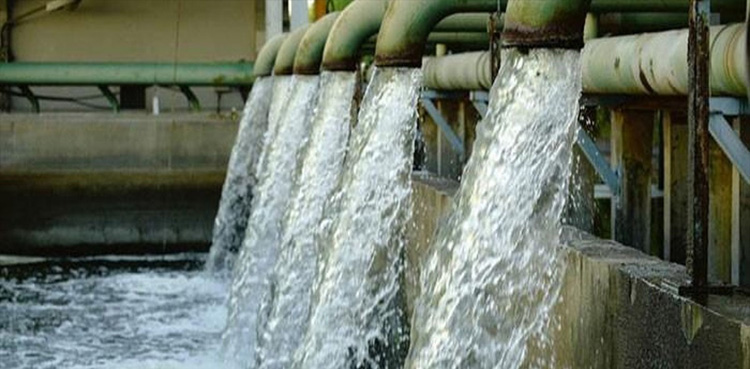
Karachi may face a shortage of 100 million gallons of water per day (MGD) after a power breakdown at the Dhabeji pumping station disrupted a key pipeline, the Karachi Water & Sewerage Corporation (KWSC) said in a statement on Sunday.According to KWSC, the breakdown occurred in Phase 2 of the Dhabeji pumping station, resulting in the shutdown of two pumps and damage to Line No. 5 of the water supply system.A KWSC spokesperson said the power failure—caused by K-Electric—could create a shortage of 100 MGD in Karachi. Repair work on the affected pipeline near Thatta is underway on an emergency basis, the spokesperson added.This marks the second power breakdown at Dhabeji within days. On the night of November 13, a similar breakdown caused a shortfall of 40 MGD in the city’s water supply. That outage was attributed to a cable fault, which had shut down two major pumps at the K-3 pump house.Meanwhile, K-Electric (KE) issued a statement clarifying that alternative power sources are currently supplying electricity to the Dhabeji pumping station. However, water seepage from pipelines is creating difficulties for repair crews and damaging underground cables. KE said the issue of water leakage has been formally reported to the relevant authorities.
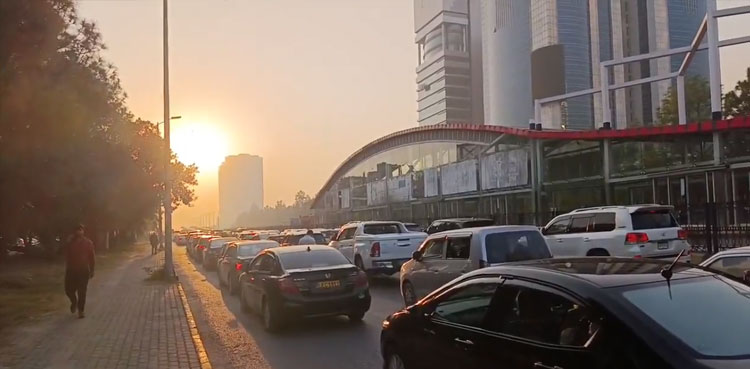
The Islamabad Traffic Police (ITP) has issued an updated traffic advisory for the ongoing Tri-Nations Cricket Series at Rawalpindi Cricket Stadium, which will continue until 29 November.Citizens have been urged to plan additional travel time due to team movements between Islamabad and the stadium.An ITP official said on Sunday that more than 300 traffic officers have been deployed to manage traffic flow during match days as well as team departures and returns. The advisory will remain effective until 29 November.According to the plan, traffic on Expressway and Srinagar Highway may experience delays, especially during peak hours. Citizens are advised to add 15–20 minutes of additional time to their travel schedule.Drone surveillance and digital monitoring are also being used to track congestion points in real time, enabling quick adjustments in deployment where required.To avoid delays during team movement, ITP has advised motorists to use: IJP Road, 9th Avenue, Margalla Road, service roads parallel to the Expressway and Srinagar Highway.Public transport may also be temporarily diverted depending on security requirements, the statement added.The ITP spokesperson said that the department is utilising all available resources to ensure minimum inconvenience to commuters. Continuous traffic updates will be provided through the Islamabad Police’s official social media platforms and radio.The ITP requested citizens to follow lane discipline, cooperate with traffic staff, and remain patient during temporary closures."For emergencies, citizens may contact Pukar-15, while traffic-related assistance is available on the ITP helpline 1915", the statement noted.

KARACHI: Traffic Police has handed Rs one lac fine, the biggest e-challan amount, to the dumper owner involved in the Razzaqabad traffic mishap.The owner of the dumper, Sherzada, has been served e-challan with Rs. one lac fine. He has to pay half amount of the fine within 14 days.The accident claimed life of a rickshaw driver, while several others were injured in the incident caused by reckless driving. A van and a shop were also damaged in the mishap.The dumper owner has also been nominated in the FIR of the fatal accident.The tracker was not found to be installed in the dumper responsible for the accident, while the vehicle was being run without the fitness certificate. Traffic police have suspended licence of the driver for three months.DIG Traffic Police Pir Muhammad Shah Saturday announced ban on plying dumpers and water in Karachi, after Razzaqabad traffic mishap.“Only those vehicles will be exempted, which have given access of their control to the traffic police,” DIG Traffic said. “Trackers have been installed in several dumpers and water tankers, but they didn’t give access to police,” he said.The owners of dumpers and water tankers with installed trackers would have to contact traffic police and to formally give access of their trackers to us, police officer said. “No dumper or tracker will now run on Karachi roads without giving access of their trackers to police,” DIG said.“The police will seize the vehicles without trackers during inspection on city roads,” he added.
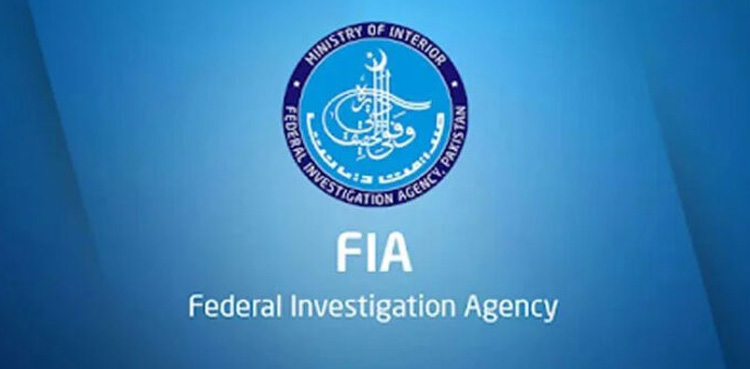
ISLAMABAD: Federal Investigation Agency (FIA) foiled an attempt to travel abroad using forged immigration stamps and offloaded a Thailand-bound passenger at Islamabad International Airport.An official told APP on Sunday that FIA Immigration intercepted the passenger, identified as Arif Khan from Mardan, who was attempting to depart on flight FZ354.The passport he was carrying contained multiple fake arrival and departure stamps.According to FIA, the Malaysian entry stamp on the suspect’s passport was also found to be counterfeit, and no corresponding record existed in the immigration system.The passenger was immediately offloaded and handed over to the FIA Anti-Human Trafficking Circle Islamabad for further legal proceedings.FIA officials said strict action is being taken against individuals involved in passport tampering, human smuggling, and illegal travel attempts, adding that further investigation is underway.

ISLAMABAD: Pakistan has called for stronger international commitments to address the rapid decline of the Himalayan–Karakoram–Hindukush (HKH) cryosphere, warning that the consequences of accelerated glacier melt are already being felt across the region.In a video message to a side event on Cryosphere Adaptation and Disaster Risk Reduction at the UN Climate Change Conference (COP30) in Belém, Brazil, Pakistan’s Climate Minister Dr. Musadik Malik described the HKH range as the “white rooftops of the world” and a lifeline for millions across South Asia.Pakistan, he noted, is home to around 13,000 glaciers that feed the Indus River system and underpin the nation’s food security, economy and ecosystems.Dr Malik said climate-driven glacier melt was proceeding at an unprecedented pace, leading to increasing hazards such as glacial lake outburst floods.He also pointed to global inequities in climate finance, arguing that a handful of major emitters contribute most to global carbon pollution while also receiving the bulk of green financing.He urged countries with historic emissions responsibility to support adaptation efforts in vulnerable mountain regions and called for elevating the cryosphere agenda at COP30.The session, organised by Pakistan’s climate ministry in collaboration with the International Centre for Integrated Mountain Development (ICIMOD), also featured officials from Türkiye, Azerbaijan, Nepal, Bhutan, and representatives from UNESCO, UNDP, and the Asian Development Bank.Earlier, California Governor Gavin Newsom grabbed the spotlight Tuesday and unleashed a barrage of attacks on the fossil fuel agenda of his political nemesis.The well-coiffed Democrat — seen as a potential 2028 presidential candidate — blasted Trump for twice leaving the Paris climate accord and for “doubling down on stupid” through his support of Big Oil.Newsom said a future Democratic administration would rejoin the Paris Agreement “without hesitation.”

ABBOTTABAD: Acting on the directives of District Police Officer (DPO) Mansehra Muhammad Azhar Khan, police have launched a district-wide registration drive for online bike riders following a rise in crimes committed under the guise of ride-hailing services.Police officials stated that while Mansehra Police fully supports hardworking riders earning a lawful livelihood, no individual will be allowed to misuse the name of ride-hailing services for illegal activities.As part of the initiative, each registered rider will be issued a special registration number, and their complete credentials will be documented at the relevant police station.Mansehra Police have urged citizens to encourage riders in their areas to complete the mandatory registration process to help curb crime and maintain law and order.Recently, the suicide bomber who carried out the attack near Islamabad district courts had arrived on a motorcycle booked through a ride-hailing service. The bike rider was subsequently taken into custody for questioning.Security forces later dismantled a Tehrik-i-Taliban Pakistan (TTP) terrorist cell involved in the attack, which claimed 12 lives and injured several others. In response to the incident, the federal government decided to ban the entry of vehicles without electronic tags (E-tags) into Islamabad.In a joint operation conducted by the Intelligence Bureau (IB) and the Counter-Terrorism Department (CTD), four members of the TTP/Fitna al-Khawarij network linked to the suicide bombing at the Judicial Complex in Islamabad’s G-11 sector were apprehended, the Government of Pakistan said.During interrogation, Sajidullah alias Sheena, the handler of the suicide bomber, confessed that TTP/FAK Commander Saeed-ur-Rehman alias Daadullah had contacted him through the Telegram application to carry out a suicide attack in Islamabad to cause maximum casualties of LEAs.The bomber Usman Qari belonged to the Shinwari tribe and was a resident of Achin, Nangarhar, Afghanistan. When he reached Pakistan from Afghanistan, Sheena arranged his stay in a residence near Islamabad.
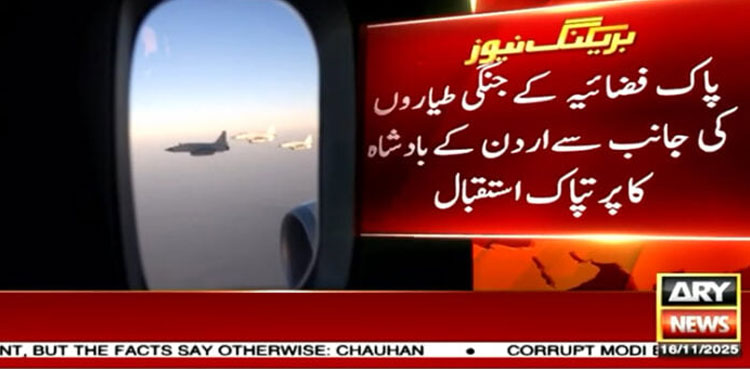
ISLAMABAD: Pakistan Air Force (PAF) fighter aircraft accorded a warm and ceremonial welcome to King Abdullah II of Jordan upon his arrival in Islamabad.A six-ship formation of JF-17 Thunder and F-16 Falcon fighter jets escorted and saluted the Jordanian monarch’s aircraft, surrounding it in a ceremonial aerial formation as a mark of respect.The grand reception symbolised the brotherly relations and mutual respect between the two nations.The formation leader of the Pakistan Air Force presented the royal salute to King Abdullah II on behalf of Pakistan’s armed forces.The aerial reception in Pakistan’s airspace stands as a testament to the enduring friendship and fraternity shared between Pakistan and Jordan.The modern, multi-role capabilities of the JF-17 Thunder and F-16 Falcon reflect the advanced operational strength of the Pakistan Air Force. Extending such aerial salutes to leaders of brotherly nations has long been a gesture of goodwill and honour in Pakistan’s military tradition.It is worth noting that earlier this year, in February, President Recep Tayyip Erdoğan of Türkiye, accompanied by the First Lady, also undertook a two-day official visit to Pakistan.Upon entering Pakistan’s airspace, his aircraft was similarly received by PAF JF-17 fighter jets, while the formal airport reception took place at Islamabad Airport by President Asif Ali Zardari, Prime Minister Shehbaz Sharif, and other senior officials.
© Copyright 2025, All Rights Reserved

